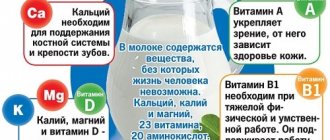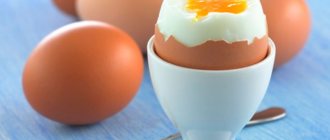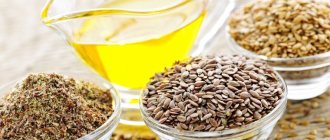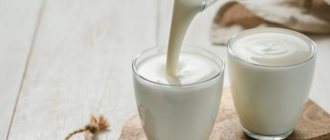Is milk acceptable for weight loss?
When following a diet or a balanced diet, people study the composition and beneficial properties of many products. This is done in order to effectively reduce weight. In order for the weight loss process to proceed quickly, it is necessary to include proteins in the diet.
Is it possible to drink milk while losing weight? It is useful to do this, because it is this product that contains protein, which is so necessary at the time of severe menu restrictions. Many nutritionists are sure that milk is important not only for losing weight, but also for improving the health of the body.
The only exception is individual lactose intolerance.
When choosing milk for weight loss, you need to consider its fat content. It’s best to stick with a lower-calorie product, but a low-fat option won’t work in this case either.
Recent research by scientists confirms the following. People who constantly drink full-fat village milk are much less likely to be overweight.
The effect on the body of the product is impressive. Without milk, any diet cannot be called balanced.
How much calcium is in milk? This indicator of the product depends on its type and processing.
The drink is not only a source of protein, but it also contains amino acids, vitamins, and minerals. Milk, filling the stomach, can suppress appetite and cause rapid satiety.
The protein contained in the product is quickly absorbed. Milk has a great effect on the digestive system and speeds up metabolism. The calcium contained in the drink accelerates the production of hormones that burn fat.
When losing weight, milk is especially useful to drink after training. At this time, the body needs protein to restore muscle mass. That is why milk is used as one of the components of various sports supplements.
Calorie calculation for a 200 gram serving
As an example, we will give the calculation of a portion equal to 200 grams - this is one of the standard weight measures that is popular. Its calorie content can be calculated by simple calculation.
The easiest and most universal option (suitable for calculating any volume of a product or ready-made dish) is calculation by multiplying the known calorie content (100 grams) by a factor of 2 obtained from division (200 / 100 grams).
Calorie content of a 200 gram serving = 53 * 2 = 106 kcal.
Composition of dairy product
Milk contains many nutrients. It contains about 100 various components, including minerals, amino acids, vitamins, milk sugar and others. Some of them are not synthesized in the human body.
Milk proteins enrich the body with essential amino acids, which come only from food. This type of substance includes methionine. It has a positive effect on liver function.
The substances contained in milk help strengthen the immune system and provide reliable protection against bacteria.
Milk is one of the main sources of calcium. With age, it is washed out of the bones, which leads to their fragility. Lactose, which is part of the product, ensures good absorption of calcium.
The product contains vitamins: E, A, K, D and group B. Milk is also rich in folic and pantothenic acid, biotin.
How much calcium is in milk? The amount of element per 100 g of product with a fat content of 2.5-3.5% is 100 mg. In skim milk: per 100 g there are 120 mg.
Factors affecting the fat content of cow's milk
There are many reasons that influence the average fat content of cow's milk. Let us note two of them - animal care and breed.
It is generally accepted that the fat content of homemade milk from a cow “at grandma’s in the village” is higher than that of cows on a large farm and can reach 11%. But, as experience shows, the quality of milk does not depend on whether the animal is kept at home or on a farm. Only the conditions of detention and correct feeding are important.
As already noted, it is almost impossible to accurately determine the fat content of a product at home, so the estimate of its calorie content is often overestimated. Moreover, consuming untested fresh milk is fraught with digestive disorders and other consequences, which also gives rise to talk about excessive fat content in homemade milk.
Genetics
It was already noted above that the breed of the animal greatly affects the fat content of the product. Breeders, of course, tried to breed a cow that would have both high milk yield and a good fat percentage. But, as already mentioned, these two qualities correlate with each other in inverse proportion, and if you set a goal to increase milk yield, this will inevitably lead to a decrease in fat content and vice versa.
To date, the best results are demonstrated by the following breeds of cows:
- "Jersey" The fat content record is 14%! The average fat content of cow's milk is 5%. However, her milk yield is low, on average 2.5–3 liters. They are usually kept one or two at a time in small farms.
- "Red Danish" The fat content of her milk is 5.1%.
- "Simmentalskaya", "Yaroslavskaya". The fat content of milk from cows of these breeds also reaches 5%.
Among those bred in Russia, in addition to the “Yaroslavl”, one can also name the “Kholmogory” and “Kostroma” breeds. The fat content of their milk reaches 4%.
It is also worth noting the “Black-and-White” and “Red Steppe” breeds. Although they produce milk with a lower fat content (approximately 3.3%), they demonstrate good milk yield. Thus, the total fat content in their products is even higher than that of fat-dairy cattle breeds.
The optimal combination of fat content and milk yield makes the “Black-and-White” and “Red Steppe” breeds very popular among large livestock breeders. Fat-dairy cattle are also in demand, but more likely in isolated cases, and not for breeding a herd.
In addition to genetics, the following factors influence the fat content of cow's milk:
- feed and their quality;
- age;
- conditions of detention.
Nutrition
Nutrition is an important factor influencing the fat content of cow's milk. Many of its organoleptic properties, such as taste, color, smell, also depend on it. And finally, milk yield also depends on feeding. Therefore, special attention should be paid to the diet of cows and the composition of their diet.
Below is a list of products whose presence in the diet of animals increases the fat content of milk:
- Pure, high-quality hay of legumes and cereals. A decrease in the consumption rate of this product will lead to a decrease in the fat content of cow's milk.
- The diet should contain a sufficient amount of fiber.
- Sugar and other light carbohydrates, although important for the normal functioning of the rumen, but the need for them is limited to 10% of the diet.
- Microelements and vitamins: calcium, zinc, vitamin E, phosphorus, vitamin A.
Green mass, rapeseed hay, and beet pulp help reduce the fat content of milk. In spring and summer, cows need to be turned out to pasture so that they spend most of their time outdoors. The growth of milk yield and the fat content of a cow’s milk increases due to the variety of plant foods.
In winter, green grass is replaced with hay, which to some extent compensates for its absence.
In this case, the hay must be dry, without rot. On cold days, you can give your animals porridge with boiled potatoes, pumpkin and zucchini, as well as grass meal and silage. With concentrated feeds, care should be taken to avoid overdose.
Age
Observations have shown that the fat content of a cow's milk increases from calving to calving and reaches its peak at the sixth calf. In general, young cows produce milk with higher fat content than older cows.
In livestock farming, various technologies are often used to increase milk yield. But it must be borne in mind that an increase in milk yield will inevitably lead to a decrease in the fat content of fresh cow's milk.
Content
Cow pens should be dry and ventilated even in winter.
In addition, to improve the quality of milk, the following rules must be followed:
- At the beginning of milking, a small amount of milk must be milked separately from the main volume. This will ensure the purity of the main product and increase the fat content of homemade cow's milk in percentage.
- The milk must be milked completely so that there are no residues in the udder. You can check this by giving the animal an udder massage after milking. It should be noted that these are the remains of cow's milk that have the highest fat content.
Of course, the fat content of cow's milk is not the most important indicator that determines the profitability of production. However, many farms sometimes deliberately increase this indicator, even at the cost of reducing milk yield. This is often more economically profitable.
By increasing the fat content of cow's milk, we must ensure that we obtain a quality product from it. Knowing what fat content of the product we need, understanding what the optimal fat content of raw materials should be, we can take certain measures to regulate it. Such measures include, for example, a properly formulated diet.
In the summer, when the cow is turned out to pasture, she produces pleasant-tasting milk with a light creamy aftertaste. Typically this milk is produced from late spring to early autumn. On natural food, the fat content of cottage cheese and other dairy products will be average.
In winter, the animals' diet lacks grass. To increase the fat content of cows' milk and their milk yield, it is necessary to add dry hay to the animals' diet, the share of which in the total diet should be at least 20%.
The supply of hay is usually distributed evenly throughout the day. At the same time, molasses is added to the diet in small quantities.
There are several rules for increasing the fat content of country cow's milk.
Let's list some of them:
- About 1% of the delivered milk received at the beginning of milking should not be mixed with the main volume.
- Before milking, you can massage the udder. In this case, milk of maximum fat content is milked.
- Pay special attention to the diet of cows during the dry period.
The fact is that feeding animals in winter has its own characteristics. Some additives to hay spoil the taste and smell of even a high-quality product. So, for example, if you give a cow a lot of molasses in winter, you will get milk with a high starch content. Beetroot, silage and kale give milk an unpleasant odor. Make it a rule: stimulating the fat content of milk should not lead to a deterioration in its taste. Carry out measures to increase the proportion of fat in milk gradually.
The fat content of cow's milk is one of the indicators of its quality. There are many fairly simple ways to help increase the fat content of homemade cow's milk. The main thing here is to do no harm and care for the animals in such a way as to increase the period of maximum lactation and always receive a high-quality fatty product.
Advantages and disadvantages
What are the benefits and harms of milk for the body? The positive properties of the product include:
- Milk is useful for preventing anemia, heart and vascular diseases.
- Thanks to calcium and vitamin D, it has a positive effect on vision, strengthens the immune system and normalizes intestinal microflora.
- During breastfeeding, milk helps a woman to establish lactation.
- The product prevents kidney and lung diseases.
- Thanks to potassium, the elasticity of blood vessels increases.
- With constant consumption of 500 ml of milk per day, a person replenishes the necessary calcium reserves by 70%.
- The product normalizes digestive processes in the body.
- Milk is used for weight loss, as well as in therapeutic and dietary nutrition.
There are situations where consuming a product can lead to negative effects on the body.
Milk should not be consumed in the following cases:
- If you are intolerant to the product or lactose.
- With zero or low stomach acidity. In this case, it is best to drink fermented milk products.
- For diabetes mellitus.
- Children's age up to one year.
Excessive consumption of milk can lead to weight gain and digestive problems. Therefore, during the period of weight loss, you need to take into account the required amount of product and not exceed the norm unnecessarily.
Types of milk
The product is divided into several types. Store-bought milk is not as healthy as homemade milk. Several varieties of it are known.
Cow's milk contains more than 20 vitamins, one of the disadvantages is its high calorie content. The product is able to fully provide the human body with calcium. The composition of cow's milk includes: saccharides (4.8 g), fats (4.6 g), water (88.3 g), proteins (2.9 g) and organic acids (ash - 0.7 g).
What does pasteurized milk mean? In this case, the product undergoes special processing and all useful substances are preserved.
Cow's milk contains vitamins A, B, D, C, E, PP, H. The product also contains many minerals.
How many calories are in a glass of milk? 200 ml contains 120 kcal.
Goat milk has its own characteristics; it contains an increased amount of vitamin A. Scientists consider it a product that can restore vitality. The fat content of goat's milk is higher than cow's milk and is 4%. However, the body completely absorbs fats, and they do not contribute to weight gain. The calorie content of goat milk is 64-68 kcal.
The valuable substances that make up goat's milk include: potassium, cobalt, phosphorus, vitamins B and C. Therefore, the product is especially useful for losing weight.
Lactose-free milk contains a lot of sugar. Nutritionists do not recommend using it when losing weight. Sugar in its composition does not promote weight loss. A glass of lactose-free milk contains 10 g of carbohydrates.
How to determine the fat content of cow's milk
To accurately determine the fat content of cow's milk, special equipment is used, so measuring this indicator at home is quite difficult. We will give a recommendation on how to do this approximately.
To estimate the percentage of fat in milk, carry out the following steps:
- Wash and dry the transparent glass beaker.
- A line is marked at the level of 10 cm.
- Fresh milk is poured into a glass up to the line and left in a warm place for 8 hours.
- Measure the thickness of the cream layer formed on top in cm.
- Taking 10 cm as 100%, the fat content of the milk is calculated based on the thickness of the layer of cream formed.
Let us note once again that the results obtained will be approximate.
What kind of milk is better to drink?
The main criteria by which milk is distinguished is its fat content. Nowadays, there is a growing trend towards getting a slim figure. Therefore, manufacturers are developing many types of low-fat products, which in their parameters do not differ from regular ones. Varieties of store-bought milk include products that have:
- Fat content 0.1%. This product is obtained by separating the cream from all natural milk. Its advantage is the presence of B vitamins and minerals (potassium, zinc, iodine). Skim milk has less calories and is suitable for overweight people. The product is considered dietary, and in sanatoriums it is included in the menu.
- Fat content 0.5%. Milk has a rich composition. The product contains vitamins D, A, PP, C, B and minerals (calcium, potassium, phosphorus). Milk is used in therapeutic and dietary nutrition. It is successfully used by people who want to lose weight. Milk is easily absorbed by the body and can be used to make yoghurts and smoothies.
- Fat content 0.7%. Milk contains a significant amount of vitamins, minerals and amino acids. The product is also recommended for people during weight loss. Before purchasing milk, it is necessary to obtain information about the production method and manufacturer, because it is produced by individual producers.
- Fat content 1%. The chemical composition of this milk is simply unique. The product is rich in vitamins, minerals and other substances. It is recommended to be used as part of a diet.
- Fat content 1.5%. Milk contains important macro- and microelements and vitamins. The product is great for people trying to get slim, especially during fasting days.
- Milk fat content is 2.5%. Proteins, fats, carbohydrates are present in the product in the following ratio: 2.8:2.5:4.7. The product is one of the most consumed and loved among the population. Milk is easily digestible and has a positive effect on the digestive system.
- What does pasteurized milk mean? The process allows you to increase the shelf life of milk. At the same time, milk with a fat content of 3.2% retains all its beneficial properties. It contains vitamins, minerals and other beneficial substances. Milk is consumed in its natural form and various dishes are prepared with it.
- Fat content 3.5%. The product has a positive effect on the brain, kidneys, liver, digestive and nervous systems. Milk is easily digestible, but it is best consumed as a separate dish. The product perfectly satisfies the feeling of hunger. Even a small amount of milk eliminates the desire to eat for a long time. This is due to its fat content.
For weight loss, pasteurized milk is considered healthier because of its beneficial composition. The preferred fat content of the product is 1.5-2.5%.
Relative and total fat content of cow's milk
On packaging of milk that goes on sale, the relative fat content is indicated as a percentage of fat contained in one kilogram of the product. The mass of one liter of milk is taken as one kilogram.
The fat content of cow's milk is inversely proportional to the cow's milk yield. This is true for all cows, regardless of their breed.
In agriculture, a general indicator of milk fat content is used, which does not always coincide in its values with the relative value. The overall indicator is calculated in relation to the total milk yield, so it is an average characteristic.
It is important for the consumer to know the relative indicator; it is by its value that the buyer chooses products, while general breed data is of interest to an entrepreneur who wants to start a business in dairy production.
For example, if, when breeding cows, we focus on the production of butter, cheese, and cottage cheese, then it is better to have a herd of breeds that, although with a lower milk yield, produce milk with a higher fat content. Such, for example, are “Jerseyskaya”, “Simmentalskaya”, “Yaroslavskaya”. The fat content of whole cow's milk ultimately determines the quality and taste of the product produced from it. The final product is tasty and of higher quality.
If the goal of the business is the production of milk, then the volume of production comes to the fore, therefore the cows should be selected from breeds that give good milk yield, for example, “Holstein”, “Schvitskaya”, “Black-and-White”. The milk produced by these breeds has a fat content of 3.5–4%, which is acceptable for a drinking product.
Hard technique
A weekly diet for weight loss consists of drinking only milk during this period. According to reviews from those who have lost weight, the product should be taken from 8 am to 8 pm.
How many calories are in a glass of milk? This can be calculated using the following formula: per 100 g of product there is an average of 60 kcal.
Features of a strict diet:
- first day - a glass of milk every 2 hours;
- second day - 200 ml of product every 1.5 hours;
- Day 3 - a glass of milk after 1 hour.
During the remaining days, drink a glass of the product every 30 minutes. Due to severe dietary restrictions, it is necessary to exit the mono-diet gradually. In the first 2 days after the diet, drink 200 ml of milk every 2 hours; in the afternoon, eat light vegetable salads.
As a result of the diet, you can lose 4-5 kg of excess weight. During this period, those losing weight should monitor their well-being. Any mono-diet carries a potential threat to the body. Milk is a healthy product, but everything must be done in moderation.
It is best to consult a specialist before going on a diet. He will give the necessary recommendations and help develop the best diet.
Gentle diet
Using the beneficial properties of milk, nutritionists have been able to develop various weight loss techniques. Dairy products are becoming the main component of food systems.
From Monday to Thursday the diet is as follows:
- Breakfast. 250 g of cheese, 2 teaspoons of honey, tea or still water, 1 low-fat yogurt.
- Dinner and supper. Those who are losing weight choose their own food, taking into account the rules of proper nutrition.
On Friday the diet menu is as follows:
- Breakfast. On an empty stomach, a glass of warm water with lemon. For breakfast - a glass of milk with cocoa and 1 teaspoon of honey.
- Snack. 1 orange or grapefruit. Drink 1 liter of water in small portions gradually.
- Dinner. Lean steak made from meat or fish with herbs.
- Afternoon snack. Yogurt with honey.
- Dinner. A cup of vegetable broth. After 20 minutes you need to eat some boiled vegetables.
On Saturday the diet is as follows:
- Breakfast. You need to drink 1.5 liters of water within 2 hours.
- Dinner. Grapefruit juice, a glass of milk with honey and cocoa, vegetable broth.
- Afternoon snack. Yogurt with honey.
- Dinner. Baked fish with vegetable salad.
On Sunday the menu includes:
- Breakfast. 2 glasses of water, grapefruit juice, milk with honey.
- Dinner. Fish fillet with herbs.
- Afternoon snack. Drink 1 liter of water gradually.
- Dinner. Baked potatoes. Before bed - yogurt with honey.
A weekly diet for weight loss will allow you to get rid of 4-6 kg.
How many calories are in cow, goat, soy milk?
Milk is a product rich in calcium; just one glass of drink provides the body’s daily need for this element by 30%. In addition, it contains many vitamins, enzymes, amino acids and saccharides. When choosing a drink for dietary nutrition, you should pay attention to its energy value.
The calorie content of cow's milk, which is familiar to everyone, is about 55 kcal (it all depends on the fat content), goat's milk is 68 kcal.
The latter contains no less nutrients and has a specific smell. Soy milk is popular with a calorie content of 54 kcal and a fat content of 1.8% (low-fat product indicator = 28 kcal), as well as delicious coconut milk - 150 kcal with a fat content of almost 15%. 100 ml of almond milk, obtained by mixing water with almond kernels, contains about 100 kcal. The indicator increases to 135 kcal if honey and vanilla are added to the drink.
How to use it correctly
Is it possible to drink milk while losing weight? During the diet, you need to pay attention to the following aspects:
- It is advisable to drink this product separately; it should not be mixed with other foods, especially sour fruits.
- It is best to drink milk 2 hours before or after meals.
- The calorie content of different types of product differs.
- The healthiest thing to do is drink natural whole milk.
- It is best to avoid foods high in sugar. These include condensed and powdered milk.
If you drink milk for weight loss at night, then this should be done 1.5 hours before bedtime. During this period of time, the amino acid tryptophan will begin to act. It is a natural sedative and helps fight sleep disorders.
Milk is a nutritious drink that will help cope with hunger pangs during the diet.
What does milk go with?
Milk tea for weight loss was previously considered one of the healthiest drinks. However, recent research has shown that this is not the case. Casein protein can block tea antioxidants. However, the drink still remains useful. After all, the decrease in the effect of some beneficial substances is compensated by the increase in the benefits of others.
To quench your thirst, it is best to use green tea, and to improve your tone - black tea.
Whether or not to drink tea with milk for weight loss is decided by the person himself, based on his preferences.
Reviews
Many people who are losing weight, having included milk in their diet, have realized how easy it is to lose weight with it. Reviews from this category of people are completely positive. They were able to lose excess weight, even if they tried unsuccessfully on other diets.
The second group of those losing weight failed to lose weight on milk due to individual intolerance.











